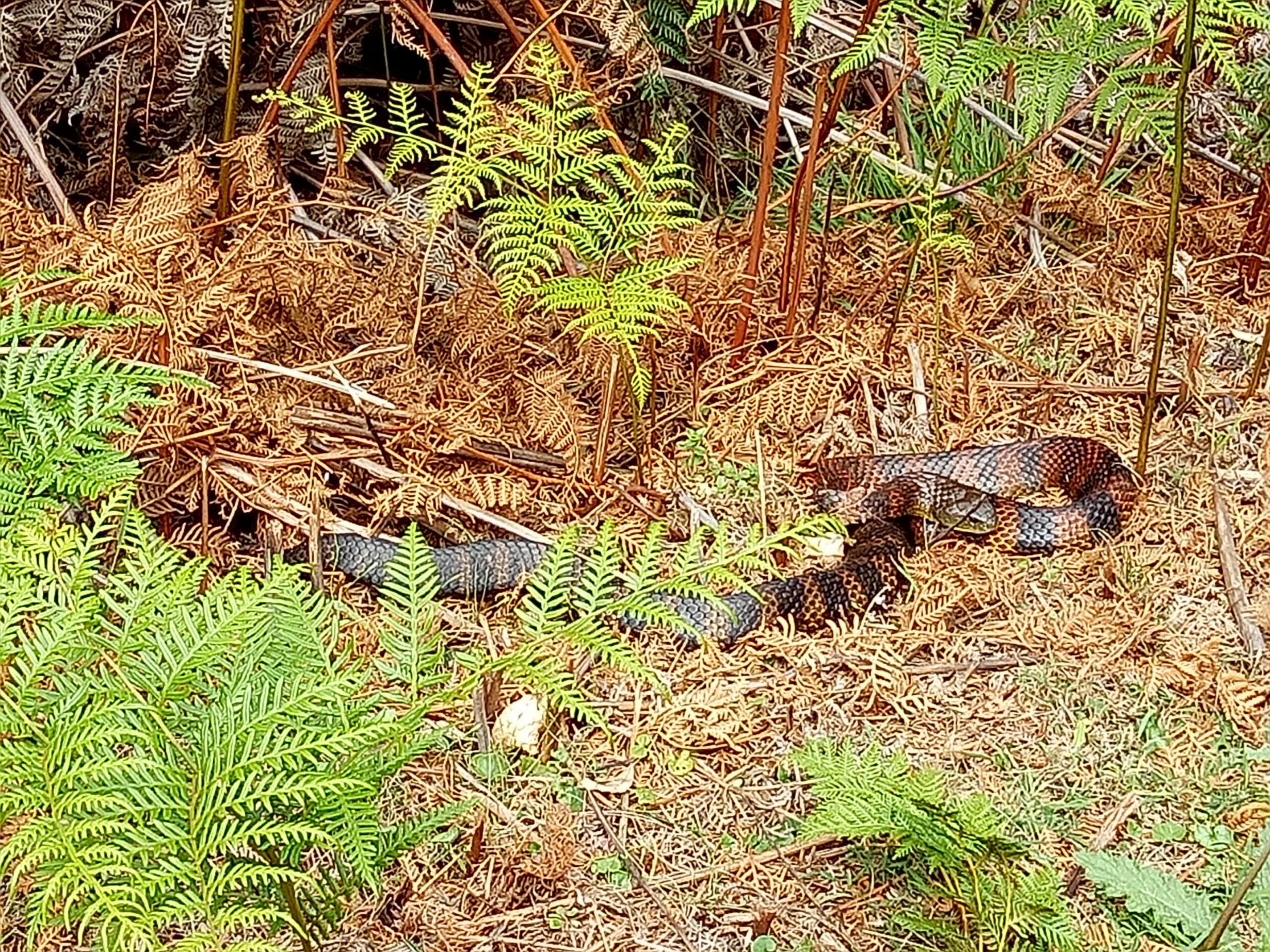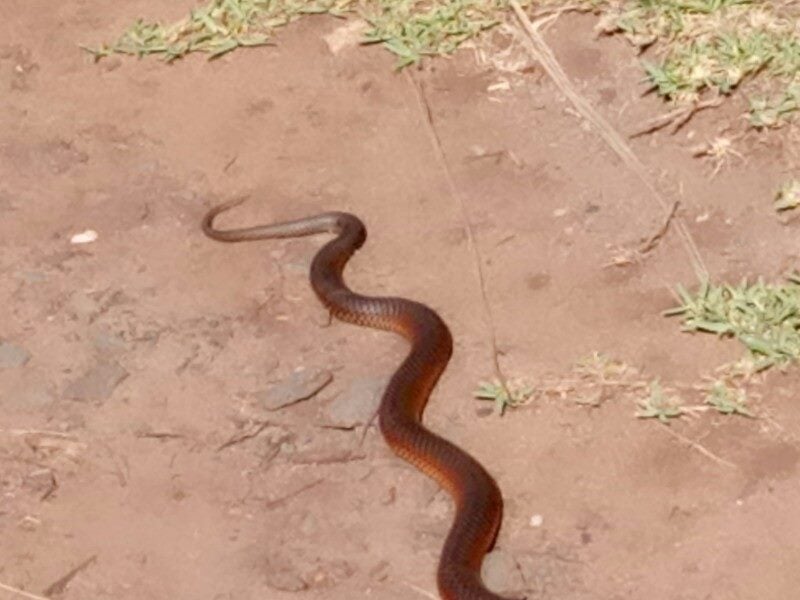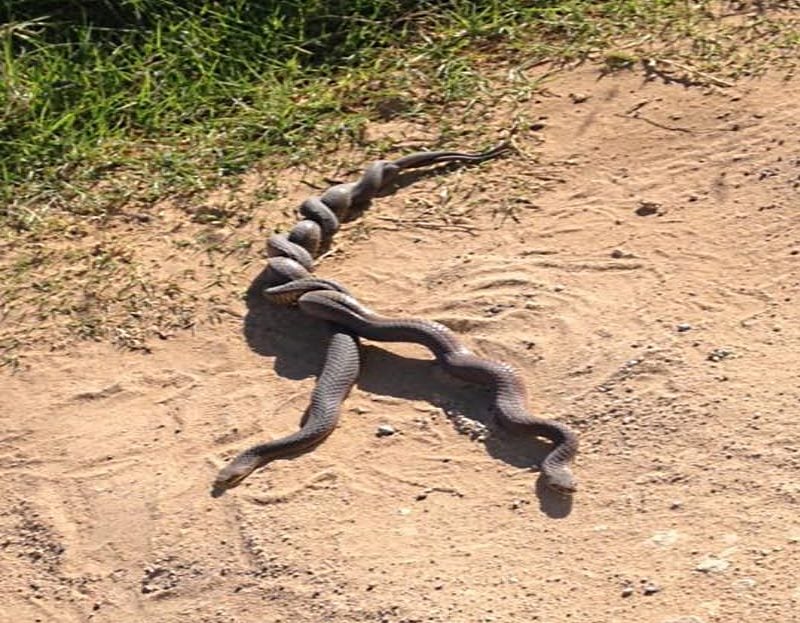Snakes On the Great Ocean Walk!

Safely Enjoying the Great Ocean Walk: Overcoming Your Fear of Snakes
Don’t let concerns about snakes deter you from experiencing the Great Ocean Walk. These reptiles are generally indifferent to human presence and prefer to avoid us. To coexist peacefully, simply be mindful of where you place your hands and feet, especially in tall grass, and refrain from walking barefoot.
If you encounter a snake, maintain calm—do not touch, provoke, or startle it. Your best strategy is to remain still or slowly back away, allowing the snake the opportunity to leave.
What to Do If You’re Bitten by a Snake
In the rare case of a snake bite, it’s crucial to manage the situation effectively to slow the spread of venom. Immediately apply a pressure immobilisation bandage with moderate pressure, akin to how you would treat a sprained ankle, ensuring not to overly constrict blood flow.
Extend the bandage over the entire limb and immobilise it with a splint. Avoid washing the bite area to preserve venom traces for accurate antivenom identification at the hospital. Stay as immobile and calm as possible, and call emergency services without delay.
Our Experience with Snakes on the Great Ocean Walk
Throughout almost 20 years of facilitating hikes along the Great Ocean Walk, Walk 91 has never had a participant suffer from a snake bite. However, on warm days, snakes might be found sunbathing on the path. While awareness is key, we encourage walkers to admire these fascinating creatures from a safe distance should they spot one.
Should you Book a Walking Package with Walk 91, we are ready to provide detailed guidance during the personal walk briefing upon arrival in Apollo Bay.
By adhering to these guidelines, hikers can safely enjoy the sights and experiences the Great Ocean Walk offers without undue worry about snakes.

Snake Species in Otway National Park
In Otway National Park, sightings of snakes are relatively rare, with only a handful of species reported. Among them, the White-lipped Snake poses little to no threat to humans. This contrasts with the Lowland Copperhead and the Tiger Snake, the latter being the most formidable in terms of danger.
The Tiger Snake: Appearance and Behavior
The Tiger Snake, notable for its potential to reach lengths up to 1.5 meters, typically exhibits a dark brown colour with distinctive yellow stripes encircling its body. However, these markings may not always be visible. Their behaviour adjusts with the temperature: during hot spells, they become nocturnal, while cooler, warm weather prompts them to sunbathe on open ground or atop logs, making them more visible to visitors.

The Lowland Copperhead: Appearance and Behavior
Despite its potent venom, the Lowland Copperhead tends to display a less aggressive demeanour compared to the Tiger Snake. Its appearance varies from dark brown to black, with some individuals showcasing a reddish orangish belly, leading to occasional confusion with the non-native Red Bellied Black Snake. This species’ adaptability to different environments underscores the diversity of snake habitats within the Otway ranges.
Non-Threatening Species: The White-lipped and Little Whip Snakes
The White-lipped Snake, with its modest length of around 50 centimetres, is identified by its grey or brown colouration and a distinctive pink or yellow belly, highlighted by a white stripe running from the nose to the neck.
Similarly, the Little Whip Snake, another non-dangerous species, reaches the same length and features a glossy brown body with a darker head. Though infrequently encountered, it adds to the biodiversity of the eastern Otway ranges.
These descriptions offer a clearer understanding of the snake species inhabiting Otway National Park, providing visitors with important information on recognising and responding to these reptiles during their explorations.
The Mating Rituals of Snakes
Snakes engage in a unique ‘mating game’ that commences when the female is ready to mate. This readiness is signalled by the release of pheromones from glands on her back, creating an odour trail that attracts male snakes. Upon locating her scent, the male follows her trail to initiate courtship.
Courtship and Mating Behaviors of Snakes
The courtship ritual begins with the male snake gently bumping his chin on the female’s head and maneuvering over her body. When the female indicates her readiness by lifting her tail, the male entwines his tail with hers, aligning their cloacas—their reproductive and waste exit points. Male snakes are equipped with two reproductive organs, known as hemipenes, which they extend to release sperm. The mating process can vary in duration, lasting from less than an hour to an entire day.
Reproduction Strategies in Snakes
Snakes exhibit a range of reproductive strategies, from laying eggs to giving birth to live young. Female snakes can mate once or twice a year, laying anywhere from one to a hundred eggs or bearing one to a hundred and fifty live offspring at a time. Interestingly, some species employ a combination of these methods, with the female retaining the eggs internally until they hatch, effectively giving birth to live young.
These insights into snake reproduction highlight the complexity and diversity of their mating behaviours and strategies, offering a glimpse into the fascinating life cycles of these reptiles.
We hope this blog has been informative. Please browse our Tours of the Great Ocean Walk before you go. If you have any questions, please contact us.

